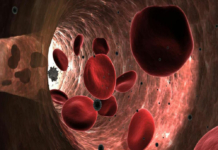There are certain problems in the country that require deep insight and understanding to be solved, such as the economy, but there are certain problems which have a clear cut solution, yet they remain unsolved, i.e the lack of water.
When you don’t have enough water, you have to build dams to store it so that it can be utilized later. There is no rocket science behind this problem, yet our rulers ignored this pressing issue.
PPP has been a big hurdle in the construction of the Kalabagh Dam. Imagine having an acute water crisis ahead but still having the audacity to move a resolution against the construction of a dam that could be the game-changer in both the agriculture and power sectors. Ironically it was PPP who first proposed the idea of this dam, and then stood up against this dam.
“We feel insecure and being those affected by dams and canals by upper riparian, we have suffered a lot, our crops are on decrease and poverty is on the rise,” stated a resolution that was passed two years ago in Sindh Assembly on September 2018. PPP deliberately hindered the construction of a dam when PTI and then chief justice of Pakistan Mian Saqib Nisar had successfully created an environment for its acceptance. But PPP being PPP used the Sindh card because it was afraid that the construction of such a mighty Dam in the tenure of PTI will weaken PPP in Sindh, as the voter of PPP would eventually question why did not PPP itself constructed this dam.
But PPP gave another reason for its opposition. According to the people’s party, if the dam is constructed on Indus, there will be a massive food shortage because agriculture will be affected which will result in poverty. Another concern that they had was Punjab might steal their water. It was an infamous conspiracy theory that the Punjab led federal cabinet wants to build a Dam and use it for its own agriculture and power sector requirements at the cost of the interests of Sindh.
The dam was constructed because PPP was protecting the interest of the people of Sindh. Right? So cut to four years, who is suffering the most? The people of Sindh. PPP passionately opposed the Kalabagh Dam for the people of Sindh to avoid an agricultural crisis, but the same people are still facing the agricultural issues, not because we built a dam, but only because we did not build a dam.
If the dam was really for the interest of Punjabis only, they would be suffering the most, however, they aren’t. The agriculture sector in Sindh is starving because of a lack of water.
Sindh is on the verge of running dry. Now, where is the People’s Party? What does it get to say now? Four years later, you are telling your people not to cultivate rice? What is your backup plan?
Dealing with water scarcity should be the top priority of the Sindh government. Right? Wrong. They just announced a 78 billion rupee bus service for Sindh with a separate privileged track. This is the priority of the Sindh government. It is like your children are crying for water, but you are buying them toys instead.
How long can those toys distract them from their thirst? This money could easily be utilized to begin the construction of a local dam. If Punjab Small Dams Organisation can approve nine dams for twin cities (February 26, 2022) in just 5 billion rupees then imagine how many dams the Sindh government could build in 78 billion rupees, but the flawed priorities as usual.
It is high time for PPP to open up its eyes and realize the need of the hour. It should abandon the unconvincing series of concerns that it showed towards this mega project that deprived a massive number of Pakistanis of its fruitful output. Earlier, PPP never showed any flexibility on this issue, but now when there is the looming water crisis in Sindh, Prime Minister Shehbaz Sharif should take PPP on board and start the construction of the dam on an urgent basis.
As Pakistan currently only stores just 10% of its available water source and the rest of the 90% of the water is wasted in the sea with no use. So there’s a great need to build more dams to store water for both agricultural and power generation purposes.







